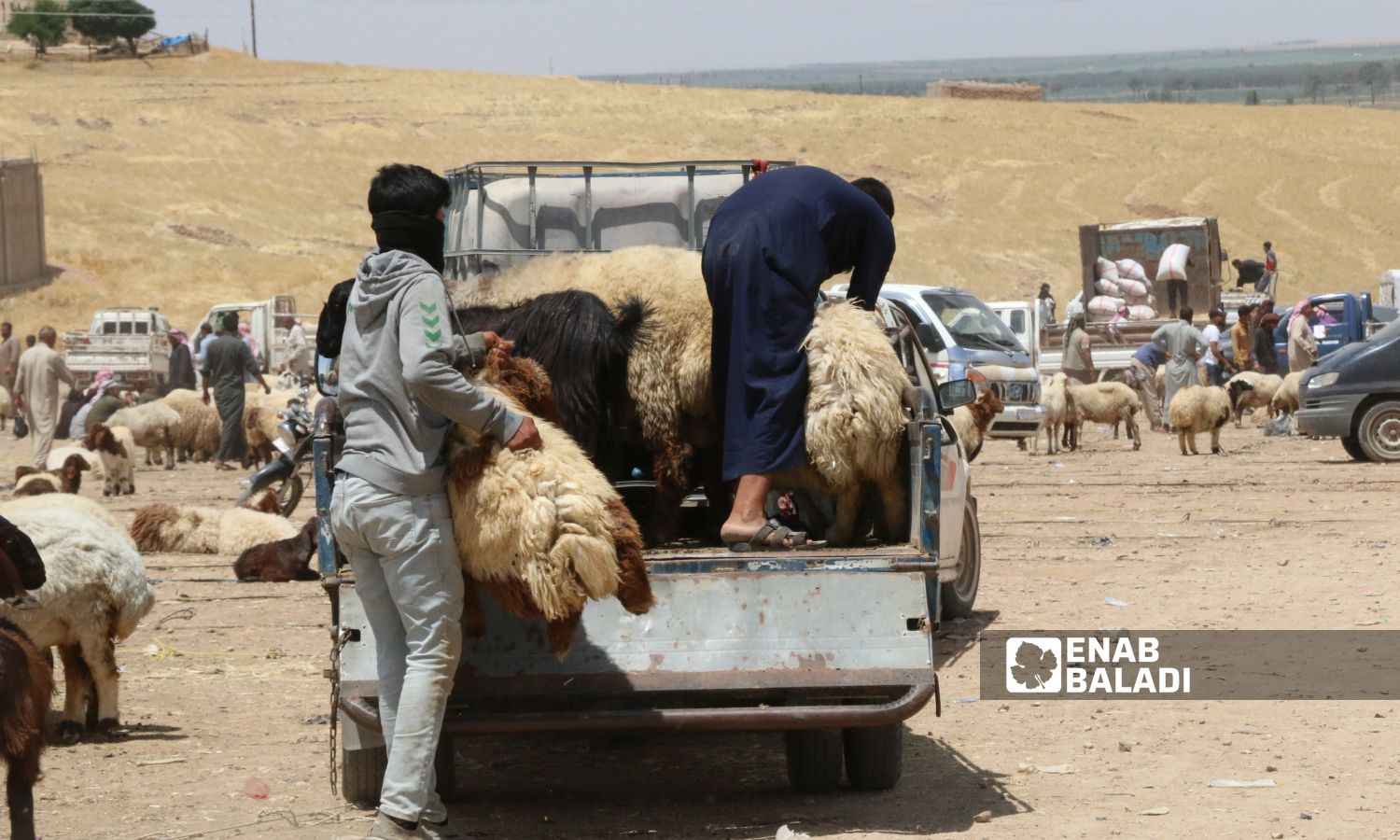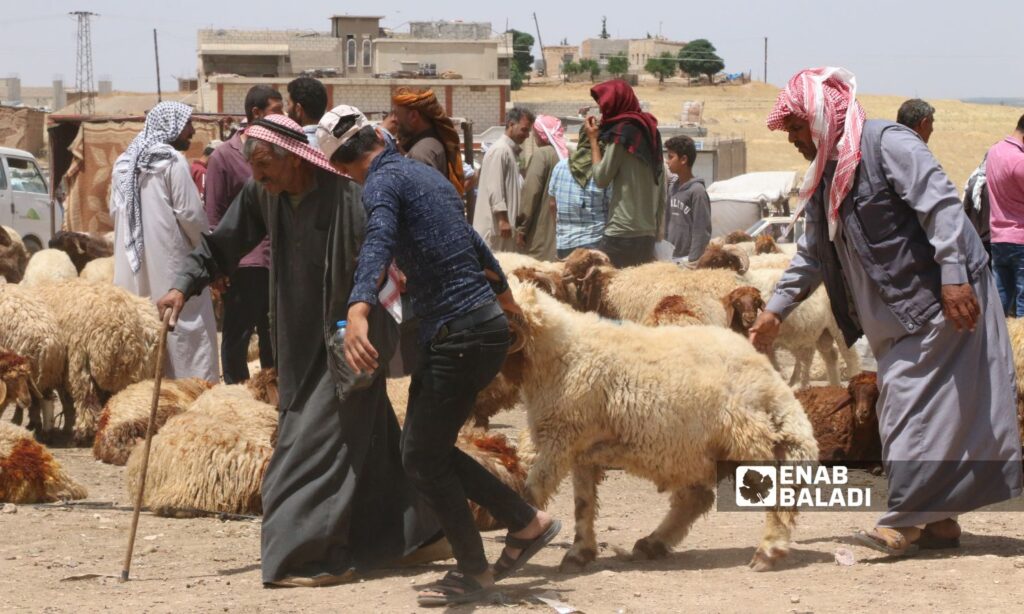The city of Ras al-Ain, northwest of al-Hasakah province, is witnessing a significant increase in the prices of sacrificial animals compared to last year, and a weak buying turnout, coinciding with the approach of Eid al-Adha.
According to a tour by an Enab Baladi correspondent in the sacrificial animal market, the price of a sacrificial sheep ranged between three million and four million Syrian pounds for 35 kilograms of pure meat.
For sacrificial animals weighing more than 45 kilograms, the price ranged between five million and seven million Syrian pounds, while the price of goats starts from two million pounds.
Cows are sold in US dollars, with prices ranging between $2,500 and $4,000.
Daily wages in Ras al-Ain range between 30,000 and 40,000 Syrian pounds (approximately two and a half dollars), varying according to the number of working hours and the type of profession, whether agricultural or construction.

The livestock market is experiencing stagnation in Ras al-Ain due to the high prices of sacrificial animals – June 10, 2024 (Enab Baladi)
Unprecedented increase
Most residents of Ras al-Ain consider the sacrificial animal an essential part of their traditions and strive to buy it early before Eid al-Adha due to the high prices in the days leading up to the holiday.
Mohammed al-Qawas from the nearby town of Tal Half told Enab Baladi that he started saving money for the sacrificial animal more than seven months ago in preparation for Eid al-Adha.
He mentioned that he could not find a suitable sacrificial animal for the amount he saved and had to borrow money to complete the necessary amount, adding that most brokers in the livestock market are not satisfied with reasonable profits, as they add more than 30% profit when selling sacrificial animals.
As for Mustafa Khidr from Ras al-Ain, he told Enab Baladi that he decided, along with his three brothers, to share the purchase of a sacrificial animal due to their inability to each buy one on their own, and they bought a ram for 9 million Syrian pounds.
Had it not been for the contribution of his brothers in paying part of the amount this year, they would not have been able to buy a sacrificial animal for Eid, he said.
The livestock market is experiencing stagnation in Ras al-Ain due to the high prices of sacrificial animals – June 10, 2024 (Enab Baladi)
Exporting and availability of pastures increase prices
Hasnawi al-Ali, a sheep breeder and trader in the livestock market in Ras al-Ain, described the market situation as “stagnant” and told Enab Baladi that he has been working in this field for more than 30 years and has not witnessed such stagnation in selling sacrificial animals.
He explained that the current demand is limited to some local organizations and associations that buy sacrificial animals and distribute them to the residents during Eid al-Adha.
He added that residents buy goats or old ewes because of their relatively low prices compared to rams and sheep.
He pointed out that several factors have contributed to the rise in livestock prices, the most important of which is the availability of fodder and pastures in large areas and quantities in Ras al-Ain, and the export of sheep to Turkey for Turkish traders, who in turn sell them to Gulf countries.
The livestock market is experiencing stagnation in Ras al-Ain due to the high prices of sacrificial animals – June 10, 2024 (Enab Baladi)
Raising sheep in the Ras al-Ain area and the eastern countryside of Syria is one of the pillars of the local economy, with the “Awassi” breed constituting the largest part of sheep breeding in Ras al-Ain, alongside the presence of hybrid types “Hamdani” and “Hamawi”.
According to statistics from the Ras al-Ain Agriculture Directorate, about 2750 families primarily depend on livestock breeding as their main livelihood.
The livestock sector in Ras al-Ain suffers from a continuous shortage of veterinary medicines and their high prices, and expired drugs are arriving from unofficial crossings with areas controlled by the Syrian Democratic Forces (SDF), according to a previous report by Enab Baladi.
The livestock and agricultural sector in Ras al-Ain has incurred significant losses due to the drought that hit the region in the past two years. Local council estimates indicate that the number of dead sheep reached about 100,000 heads, parts of agricultural lands have become desertified, and irrigation wells have dried up.











